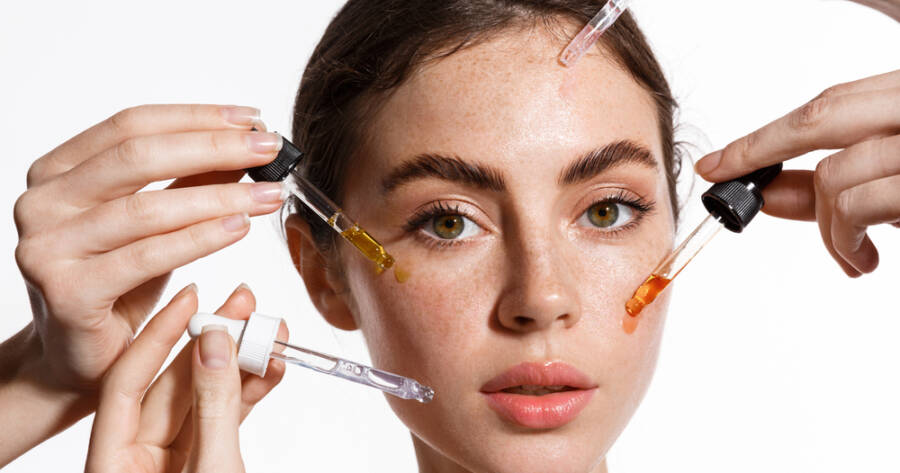Walk down any beauty aisle and you’ll see it everywhere—products labeled “clean,” “natural,” “non-toxic,” or “green.” These terms are designed to appeal to health-conscious shoppers, but what do they actually mean? With little regulation around these claims, it’s easy to get confused (or misled). If you’re trying to make smarter, safer choices for your skin and the planet, it helps to separate fact from fiction.
Find out what common clean beauty terms really mean, red flags to look out for, and top-rated product picks that live up to the promise—without the marketing fluff.
“Clean Beauty” Is a Buzzword—Not a Certification
The term “clean beauty” isn’t regulated by the FDA or any global standard. Brands can use it however they want, which means it can signal anything from “free of a few controversial ingredients” to “100% organic and sustainable.” This lack of consistency makes it hard for consumers to know what they’re actually getting.
In general, when brands say “clean,” they typically mean that the product doesn’t contain certain ingredients—like parabens, phthalates, sulfates, or synthetic fragrances—that are considered potentially harmful or irritating. But unless a product is certified by an independent third party, you’re taking the brand’s word for it.
Pro tip: Look for products backed by reputable certifications like EWG Verified™, Ecocert, or Made Safe, which have clear standards for safety and sustainability.
Natural Doesn’t Always Mean Better (or Safer)
It’s easy to assume that “natural” equals “safe”—but that’s not always true. Poison ivy is natural, after all. In the beauty world, “natural” usually means the product contains ingredients derived from plants, minerals, or other sources found in nature. But these ingredients can still cause reactions or spoil quickly without proper formulation.
Also, many “natural” products still contain synthetic stabilizers or preservatives to extend shelf life or improve texture. And that’s not necessarily a bad thing—science-backed synthetics can often be safer and more effective than their natural counterparts.
Key takeaway: Focus on ingredient transparency and safety, not whether something sounds plant-based.
Decoding “Non-Toxic” and “Chemical-Free”
“Non-toxic” is another widely used label that lacks a standard definition. It suggests that a product won’t harm your health—but since most conventional beauty products already comply with safety regulations in developed countries, “non-toxic” is often more of a marketing tool than a meaningful distinction.
Meanwhile, “chemical-free” is scientifically inaccurate. Everything is made of chemicals—including water. What brands usually mean is that the product is free from certain synthetic chemicals, but the term itself is misleading.
What to watch for: Instead of chasing “chemical-free,” look for specific claims like “fragrance-free,” “alcohol-free,” or “free from PEGs,” depending on your sensitivity or concern.
The Ingredients That Matter Most
If you’re looking to build a safer, cleaner beauty routine, it helps to know which ingredients are most often flagged by dermatologists and consumer safety groups. Here are a few to watch out for:
-
Parabens: Used as preservatives, they’ve been linked (in high concentrations) to hormone disruption.
-
Phthalates: Often found in synthetic fragrances, these may also disrupt hormone activity.
-
Sodium Lauryl Sulfate (SLS): A foaming agent that can strip the skin’s natural oils and cause irritation.
-
Synthetic fragrance: A common trigger for allergies and skin reactions, since it can hide dozens of unlisted ingredients.
That said, your level of concern may vary. If a product works for you and hasn’t caused irritation, you don’t necessarily need to toss it—but knowing what’s in your routine gives you the power to choose wisely.
Clean Beauty Picks That Deliver
Looking for product recommendations that check the clean beauty boxes without compromising on performance? Here are a few standouts:
-
Biossance Squalane + Vitamin C Rose Oil – EWG Verified, cruelty-free, and packed with antioxidant-rich ingredients that brighten and hydrate.
-
Ilia Super Serum Skin Tint SPF 40 – Combines clean ingredients, sun protection, and skincare benefits in one lightweight formula.
-
RMS Beauty “Un” Cover-Up Concealer – Organic coconut oil-based and beloved for its blendable, skin-like finish.
-
Native Deodorant – A cult-favorite aluminum-free deodorant that actually works and comes in a variety of scents (or unscented).
Always double-check the ingredients and see how a product performs for your specific skin type. Clean beauty isn’t one-size-fits-all.
Making Smarter Choices Without the Hype
Clean beauty doesn’t have to be confusing. While marketing language can be murky, educating yourself on ingredient labels and choosing trusted brands can help you cut through the noise. Instead of getting caught up in trendy terms, focus on what works for you—and what aligns with your values around health, sustainability, and effectiveness.
When in doubt, less is more. A simplified routine with a few well-chosen, skin-friendly products will always outshine a cluttered shelf full of buzzwords.

